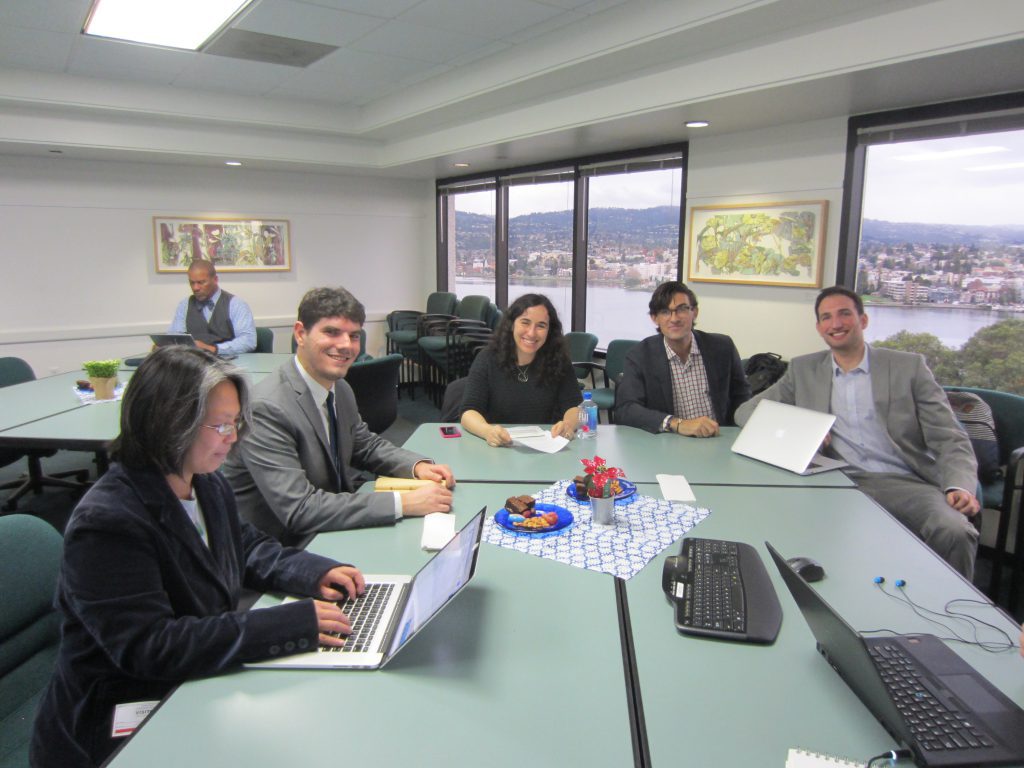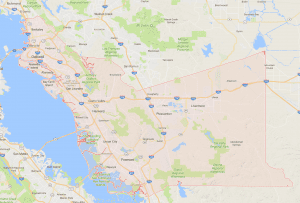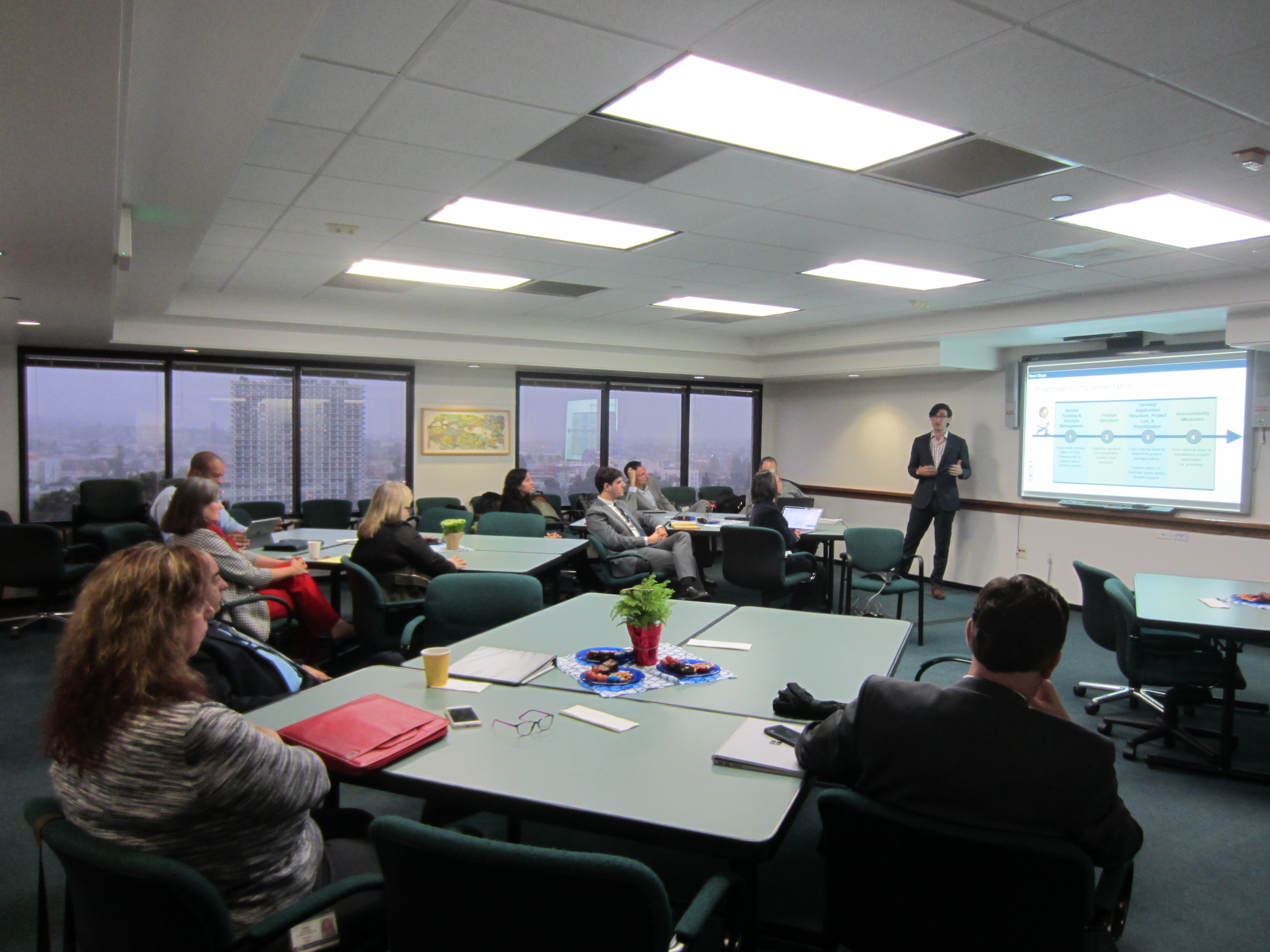Investing in Our Future:
Experiential Learning with Alameda County
By Sarah Lerhaupt
It’s always a tense moment in class when students are preparing to select their Experiential Learning (EL) partners – a relationship that will define the semester. Each EL Partner comes to PGS with a sustainable management challenge that staff connects with course content. Clandestine chats are flying on laptops and phones as friends try to coordinate and compare interests. The selection process is “first-come, first-serve” with students ordered randomly.

In Fall 2016, I was finally getting used to the process and stress. I tried not to get my hopes up, but there was one EL partner that stood out: the Alameda County Office of Sustainability, for the opportunity to work with a local government on sustainability initiatives. Most people do not put the business of government in the same bucket with business school, but governments are organizations whose purpose aligns naturally with sustainable management. Governments need to think long-term, and it is their mission to balance financial, social, and environmental needs.
Alameda County Sustainability Office’s EL project coincided with Strategy and Managerial Finance courses. The Sustainability Office was in the middle of implementing a ten-year Climate Action Plan for government services and operations. Their challenge? Part of their Climate Action Plan called for developing a long-term funding strategy for emissions reductions projects. Our Presidio Graduate School (PGS) team was tasked with answering,
“What are the best funding approaches to recommend to the County’s Climate Executive Committee, County Administrator, and County Auditor, and what evidence is there that shows demand for such funding?”
Sustainability Project Manager Emily Sadigh chose to work with PGS because “the team would be able not only to analyze financial factors but also to understand the sustainability values driving the effort.”
At the end of the semester, our team presented our findings to the County’s Climate Executive Committee. Our recommendation that the County’s goals would be best served by creating an internal revolving loan fund was informed by a County needs assessment and an evaluation of potential finance mechanisms.
“Starting from the kick-off meeting, I was impressed by the professionalism and emotional intelligence of the team,” said Emily Sadigh. “The members combined their individual strengths to integrate qualitative insights and analytical rigor into a clear recommendation.”
Alameda County moved forward with our project by working with a UC Berkeley Goldman School of Public Policy student to further refine the concept in Spring 2017. The Climate Executive Committee has maintained their interest and is currently reviewing plans for a pilot project.
When we say that this is a place where students “learn how to change the world,” we mean it.
In our studies, there are opportunities for impact – and to connect with, and learn from, amazing professionals like Sustainability Office’s Project Manager Ryan Bell, Program Manager Carolyn Bloede, and Project Manager Emily Sadigh. Special thanks to Liz Shenaut, Climate Corps Fellow, who worked in tandem with us on this effort. We look forward to continued EL partnerships with government agencies.
Interested in becoming an Experiential Learning Partner?
Contact our EL Manager here and let’s see if there’s a fit!
Experiential Learning
CASE STUDY
About Alameda County

Alameda County is California’s seventh most populous county and includes major cities like Oakland and Berkeley. The Alameda County Office of Sustainability is a division of the General Services Agency, which has been recognized for innovative approaches to energy, sustainability, and transportation. The County’s Strategic Vision recognizes that the environment and sustainability are fundamental to its other strategic priorities of safe and livable communities, healthy and thriving populations, housing, and transportation.
Challenge
Alameda County’s Climate Action Plan for Government Services and Operations calls for a greenhouse gas reduction target at least 15% emissions reduction from 2003 levels by 2020 and lays the groundwork for future plans to achieve 80% reduction by 2050. The Climate Action Plan contains 16 commitments to climate protection, including 80 distinct measures that the county aims to implement. Implementation requires coordination among the County’s 20 agencies and support from its more than 9,000 employees.
Actions Taken
Students made a strategic recommendation for developing an internal revolving loan fund based on a needs assessment of County employees and matched with a best-fit analysis of financial mechanisms.
Results
The suggestions helped build a foundation for the Alameda County Sustainability Office to take the next steps to create an internal revolving loan fund that would support initiatives that reduce greenhouse gas emissions from County operations.

